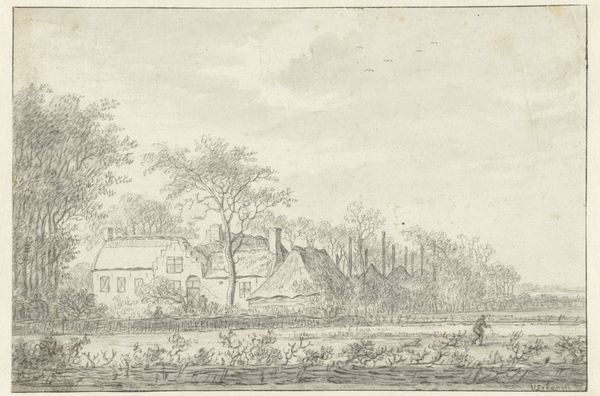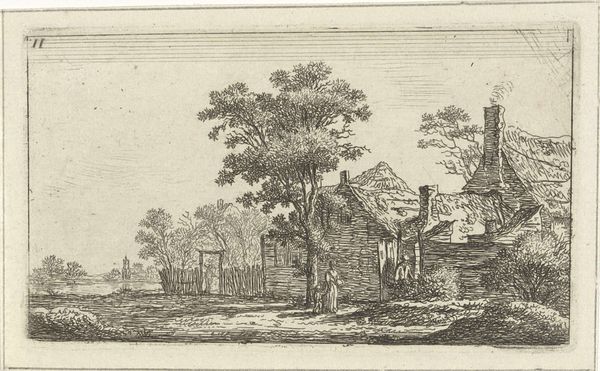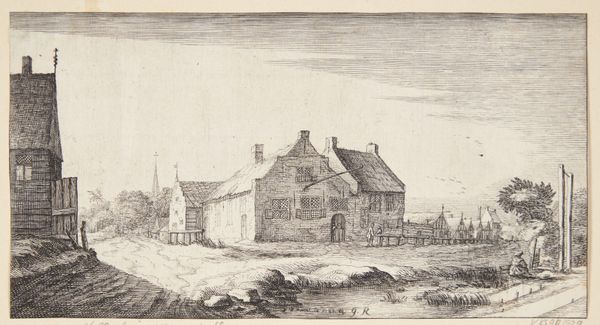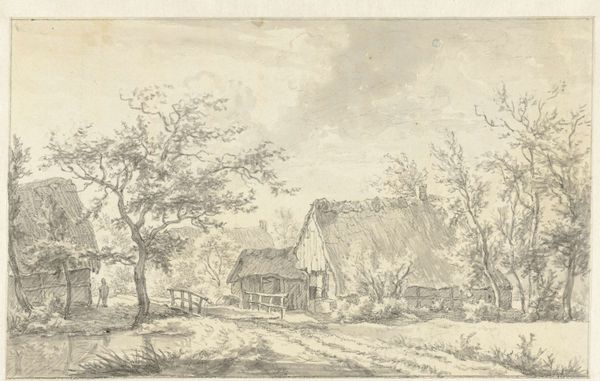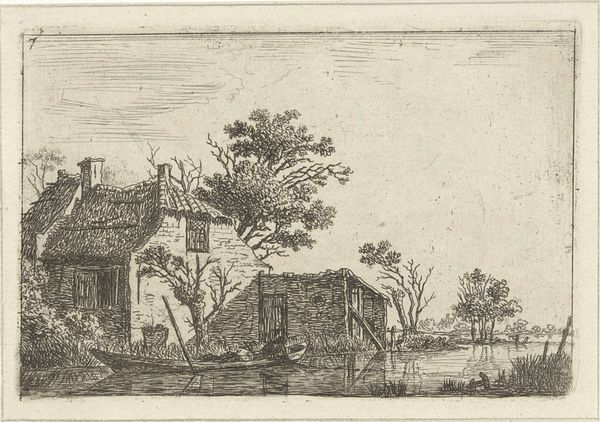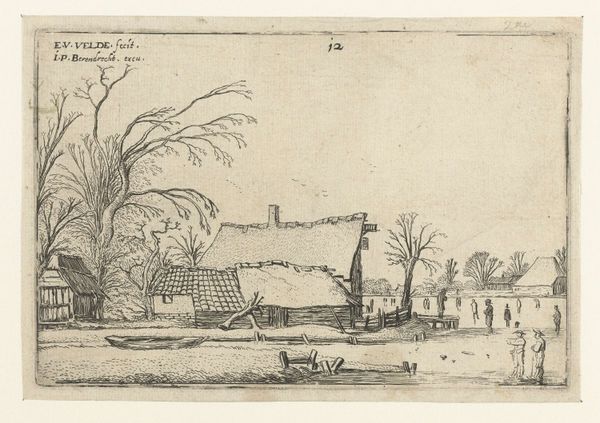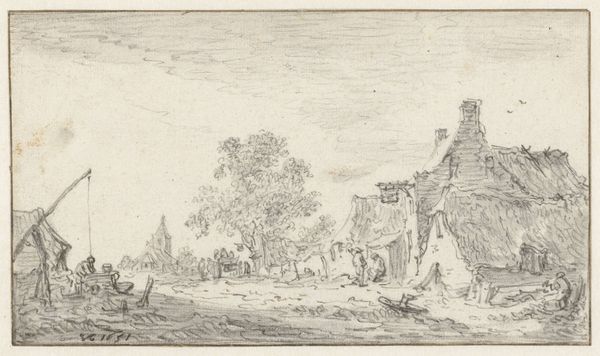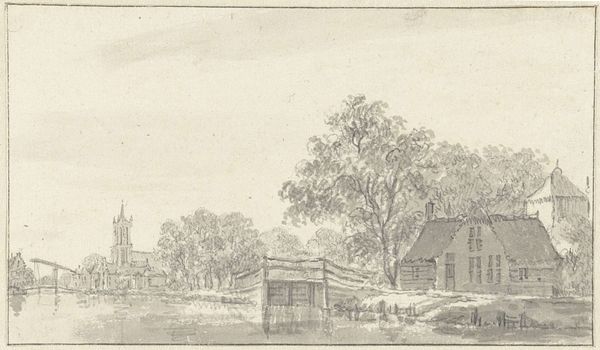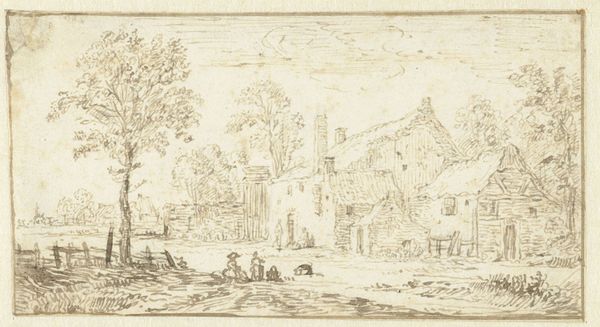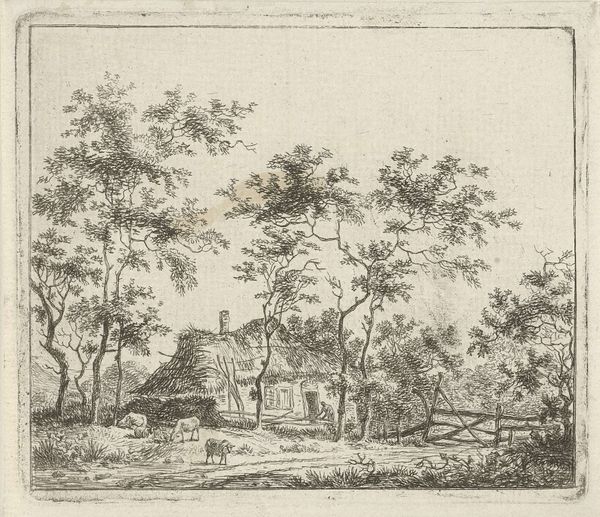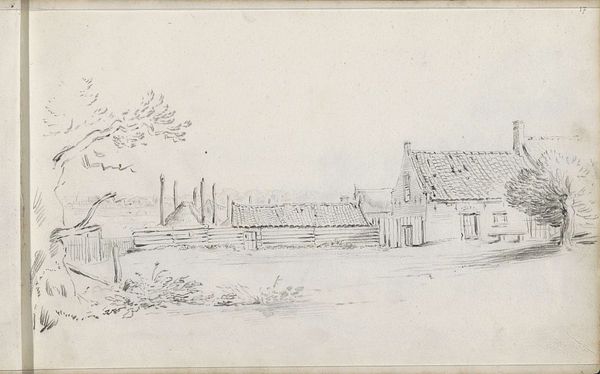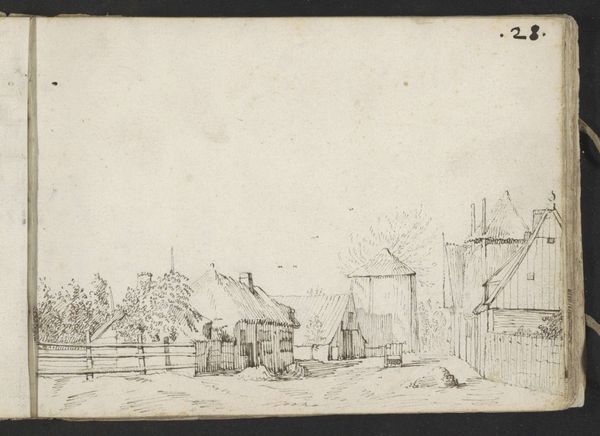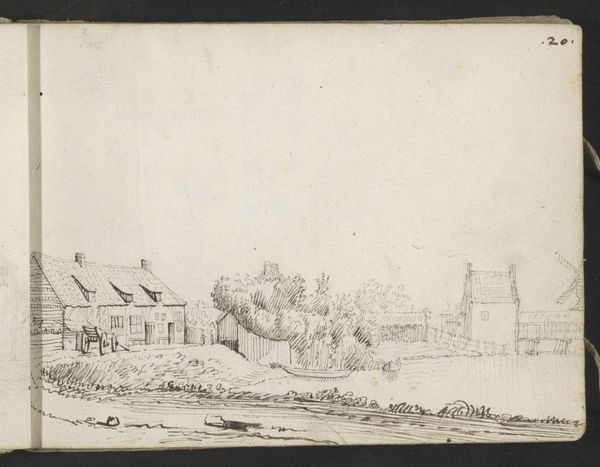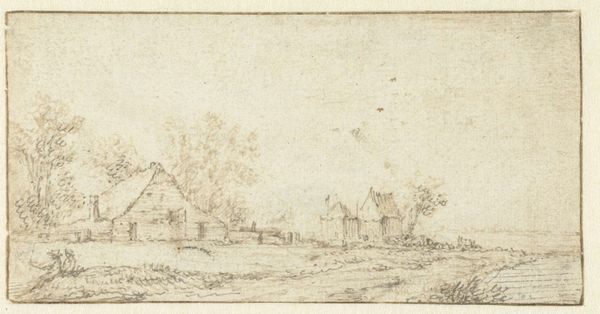
drawing, etching, paper, ink
#
drawing
#
dutch-golden-age
#
etching
#
landscape
#
etching
#
paper
#
ink
#
cityscape
#
realism
Dimensions: height 76 mm, width 145 mm
Copyright: Rijks Museum: Open Domain
Jan van Goyen created this small etching, depicting a winter landscape, using an iron plate and etching tools. The fineness of the etched lines allowed van Goyen to capture the delicate, bare branches of the trees and the subtle textures of the thatched roofs. Etching is an indirect process. The artist covers a metal plate with a waxy, acid-resistant ground, then draws through it with a sharp needle to expose the metal. When the plate is immersed in acid, the exposed lines are bitten, creating grooves. Ink is then applied to the plate, filling the grooves, and the surface is wiped clean. Finally, paper is pressed against the plate, transferring the ink and creating the print. This method, while laborious, allowed for multiple impressions, making art more accessible beyond the elite. In van Goyen's time, the Netherlands was a hub of trade and commerce, with a growing middle class eager to invest in art. Etchings like this one provided an affordable way to own a piece of the artistic landscape, reflecting a shift in the art market and the democratization of artistic expression. It’s a fantastic example of how technique and material can shape an artwork’s social and cultural impact.
Comments
No comments
Be the first to comment and join the conversation on the ultimate creative platform.
